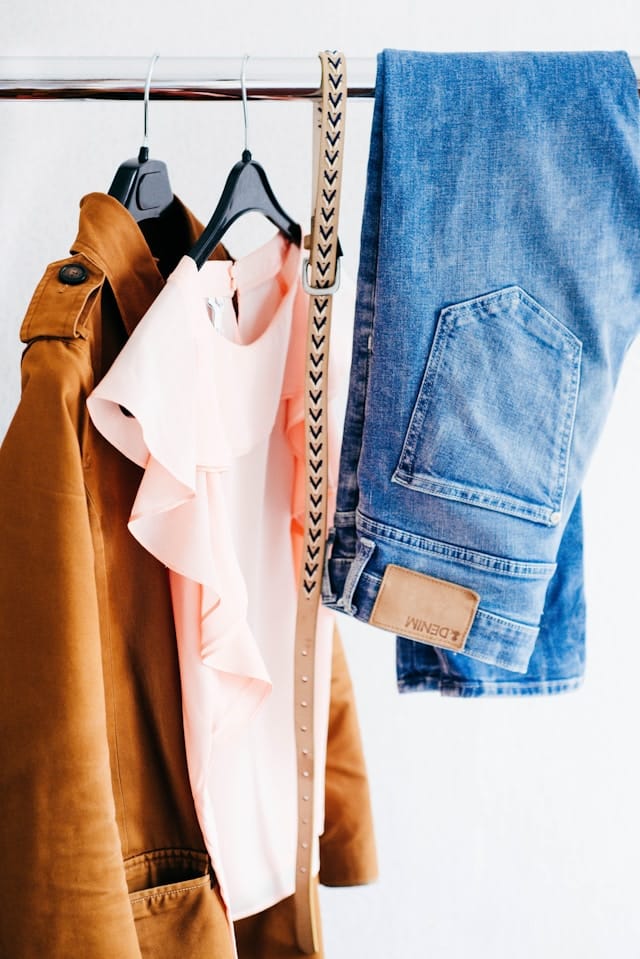What’s the Most Effective Way to Incorporate Sustainable Fabrics into a Fashionista’s Closet?

As a fashionista, you always want to look chic and stylish. But, have you ever thought about the impact of your wardrobe on the environment? According to the United Nations Environment Programme, the fashion industry is the second-largest consumer of water and is responsible for 10% of global carbon emissions. This is where sustainable fashion comes in. Incorporating sustainable fabrics into your wardrobe is not only an eco-friendly decision but also a fashion-forward one. In this article, we are going to explore the best ways to introduce sustainable fashion into your closet.
Understanding Sustainable Fabrics
Before diving into the process of making a sustainable wardrobe, it’s crucial to understand what sustainable fabrics are. These are materials that are eco-friendly, causing minimal environmental impact during their production and disposal. They include natural fibers like organic cotton, bamboo, hemp, and recycled synthetic materials like recycled polyester.
En parallèle : How Can You Style a Plaid Blazer for a Modern and Professional Look?
Sustainable fabrics also encompass upcycling, a technique where waste materials are transformed into new, high-quality pieces. This way, not only are you making a positive environmental impact, but you’re also contributing to a reduction in the demand for new raw materials in the clothing industry.
Choosing Clothes Made from Sustainable Materials
When selecting clothes for your wardrobe, it’s essential to look for pieces made from sustainable fabrics. Look at the clothing tag for information on the fabric content. Some sustainable materials to watch out for include organic cotton, linen, and Tencel.
A lire également : What Are the Best Tips for Styling a Satin Slip Dress for a Work Event?
Organic cotton is grown without the use of pesticides, making it a more environmentally friendly option than regular cotton. Linen, on the other hand, is made from flax plant fibres, which require less water and pesticides to grow. Tencel is a fabric derived from the wood pulp of trees that are grown sustainably.
Don’t forget to also check for any certifications. The Global Organic Textile Standard (GOTS) and the Standard 100 by OEKO-TEX® are some of the most recognized certifications in the industry, guaranteeing that the fabrics are environmentally friendly and safe to use.
Incorporating Upcycled Pieces into Your Wardrobe
Upcycling is not just a buzzword in the fashion industry. It’s a way of giving a new lease of life to materials that would otherwise end up in landfill. Incorporating upcycled clothing into your wardrobe is a great way to be stylish and sustainable at the same time.
When shopping, look for brands that practice upcycling. These companies transform waste materials into new and trendy pieces of clothing. You can also upcycle your own clothes. For example, an old pair of jeans can be turned into a chic denim skirt, or a shrunken sweater can be transformed into a cozy scarf.
The Importance of Quality over Quantity
The phrase "less is more" couldn’t be more apt in sustainable fashion. Instead of filling your wardrobe with fast-fashion pieces that you’ll wear only a few times, invest in high-quality, sustainable items that will stand the test of time.
Quality doesn’t necessarily mean expensive. Many sustainable brands offer affordable pieces that are well-made and stylish. So, instead of buying a new dress for each event, invest in a versatile piece that can be styled in different ways.
Sustainable fashion is about making conscious choices. It’s about choosing clothes that are kind to the environment and the people who make them. And with the rising popularity of sustainable fashion brands, it’s easier than ever to incorporate sustainable fabrics into your wardrobe.
Taking Care of Your Sustainable Clothes
Once you’ve made the switch to sustainable clothing, it’s important to take care of them in a way that prolongs their lifespan and minimizes environmental impact. Avoid washing your clothes too often, as washing can cause microfibers to shed and end up in our oceans. When you do wash, use cold water and eco-friendly detergent. Also, consider air drying your clothes instead of using the dryer.
Remember, sustainable fashion is not just about buying clothes made from sustainable materials. It’s also about making your clothes last as long as possible. This not only reduces waste but also reduces the demand for new clothing. So, the next time you press that ‘buy’ button, think about the environmental impact of your purchase and consider choosing sustainable options.
The Power of Second-hand and Circular Fashion
Second-hand and circular fashion are two potent concepts in the sustainable fashion movement. They not only contribute to reducing environmental impacts but also make fashion more accessible and affordable.
Second-hand shopping, or thrifting, involves buying previously owned items instead of new ones. This practice reduces the demand for new clothing production, thereby decreasing the associated environmental burdens. Thrift stores, vintage shops, and online platforms such as Depop and ThredUP offer a wide array of second-hand fashion items catering to diverse style preferences.
Circular fashion, a relatively newer concept, refers to a regenerative approach where clothes, shoes, and accessories are designed and produced with the intention to be used and circulated in society for as long as possible in their most valuable form. This approach can extend the life of pieces by facilitating repairing, reusing, recycling and upcycling.
Choosing second-hand or circular fashion items will not only reduce your carbon footprint but also allow you to express your unique style. These items are often unique, adding a touch of individuality to your wardrobe that fast fashion can’t replicate.
Capsule Wardrobes: Quality over Quantity
A capsule wardrobe is a collection of a few essential items of clothing that don’t go out of fashion. This includes timeless pieces that can be mixed and matched in numerous ways to create different looks. Opting for a capsule wardrobe is a practical step towards embracing sustainable style.
Consider investing in high-quality pieces that are well-made, durable, and versatile. This can significantly reduce the urge or need to constantly buy new clothes. Remember, in sustainable fashion, the focus should be on quality over quantity.
Building a capsule wardrobe doesn’t mean sacrificing style. In fact, having fewer pieces can help you understand your style better, and make more conscious purchasing decisions.
Conclusion: The Path to a Sustainable Style
Transforming your closet into a sustainable one is not just a matter of following fashion trends. It’s about making a conscious, deliberate decision to minimize your environmental impact, reduce textile waste, and support the fair treatment of workers in the fashion industry.
Incorporating sustainable fabrics into your wardrobe is a significant step towards this goal. From understanding sustainable fabrics, choosing clothes made from sustainable materials, upcycling and understanding the importance of quality over quantity, to the power of second-hand and circular fashion, and finally, creating a capsule wardrobe, each step brings you closer to a more ethical and sustainable fashion footprint.
Remember, it’s not about perfection. It’s about making progress, one outfit at a time. Ultimately, moving towards sustainable fashion is a journey, not a destination. Every small step, every mindful purchase, and every thoughtful care routine adds up to significant change.
As a fashionista, your choices have the power to shape the fashion industry and drive it towards a more sustainable future. And with the rise in sustainable fashion trends, there has never been a better time to incorporate sustainable fabrics into your wardrobe and to redefine what it truly means to be stylish.
